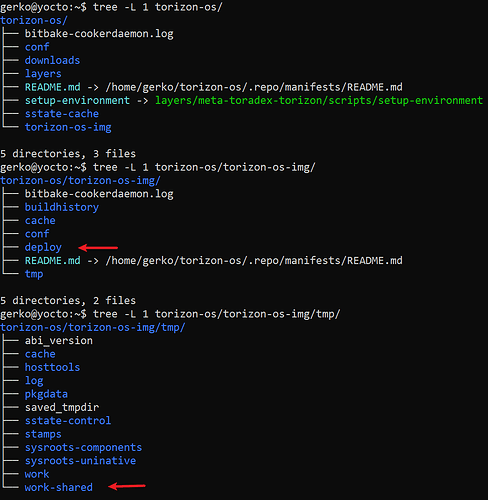HI @gerko and @matthijs !
Sorry for the delayed answer.
And thanks @gerko for being so helpful! 
I would like to try to contribute here 
That’s a good point. I brought it up internally yesterday. It is being discussed.
Thanks for pointing that out. Related to it, we have this section of this article that shows the use cases (and examples) for TorizonCore Builder: TorizonCore Builder Tool - Customizing Torizon OS Images | Toradex Developer Center. But, as you said, we are missing to explicitly show the use cases where going to Yocto is needed.
Also, related, the Torizon OS Reference Minimal was recently released, in case you would like to check:
There are several ways to perform the iteration process. See below some possibilities and my personal view of how relatively “quick” I think the iteration is (quick on quotes as it might depend on your own setup and also might be subjective). I purposely wrote it as briefly as possible, but let me know if you would like to better explore it.
| Index |
Build |
Deployment |
How quick? |
| 1 |
Yocto |
Flashing using Tezi |
Slowest (always flashing the whole image) |
| 2 |
Yocto |
Using TorizonCore Builder |
Nice and quick (tcbuild.yaml helps to automate this better) |
| 3 |
Yocto |
Using OStree directly |
Quick, but needs OStree knowledge |
| 4 |
Yocto |
Using OTA |
Not that quick, but not that slow (Needs internet) |
| 5 |
Yocto |
Using TFTP and NFS |
Quick, but needs some knowledge on show to setup |
For TorizonCore Builder (1), we have some thorough articles: OS Customization Documentation Overview | Toradex Developer Center
For OStree (3), we have the article OSTree | Toradex Developer Center. The section OSTree Update From a Local Torizon OS Build in there is especially useful.
For TFTP and NFS (5), we have this article Boot from a TFTP/NFS Server | Toradex Developer Center.
Also, I will bring up this kernel development on Torizon use case internally. It might become an interesting feature 
You would not be doing a full Yocto build everytime because indeed the caching is good 
If you are interested, we have some webinars about Yocto that can help you. Not to mention that we also have some partners that offer training on Yocto. The training might interest you too, @gerko, to accelerate development 
Agreed 
Here I would like to comment on another possibility: maybe the easiest way of developing kernel-related stuff is to have a simpler image installed (e.g. based on BSP or reference minimal image) to really quickly iterate with kernel and/or modules customization (getting training from Toradex’s partners on Kernel development would be great here). Then, after settling on the kernel modifications, you could go to the next step which would be integrating it on a Torizon OS Yocto build to validate the development against the other elements of the OS.
But, in the end, if you are able to maintain and keep track of your development, I would be bold enough to say that it is good enough for you 
Hopefully, my personal views are helpful in this discussion.
Best regards,
